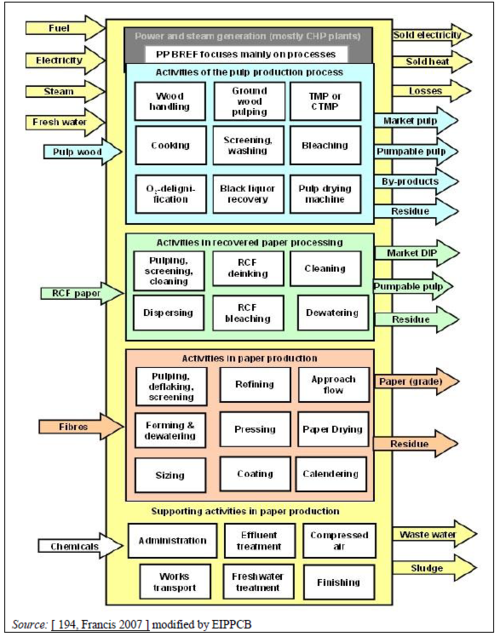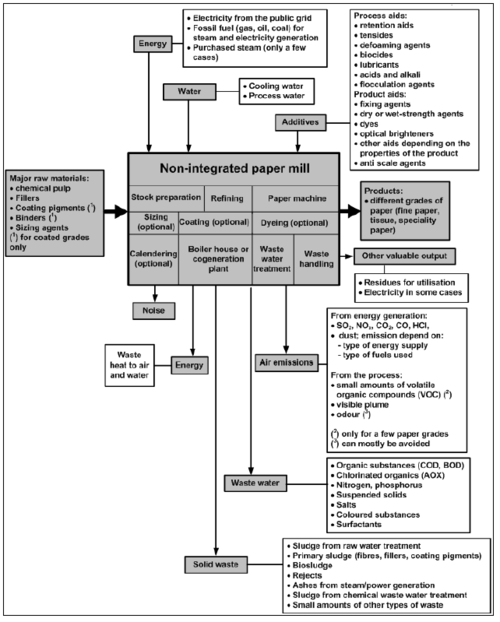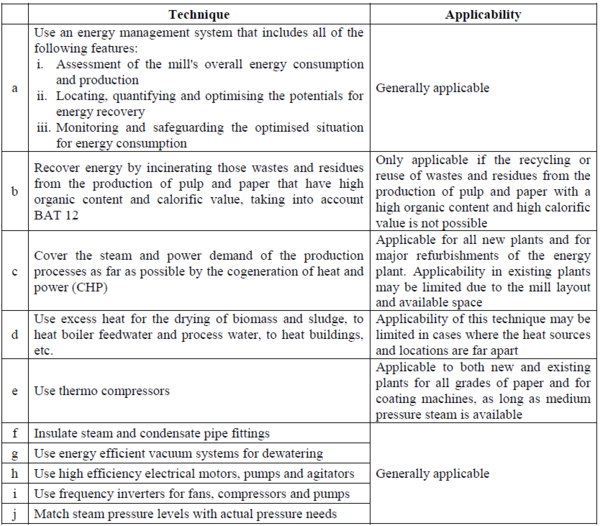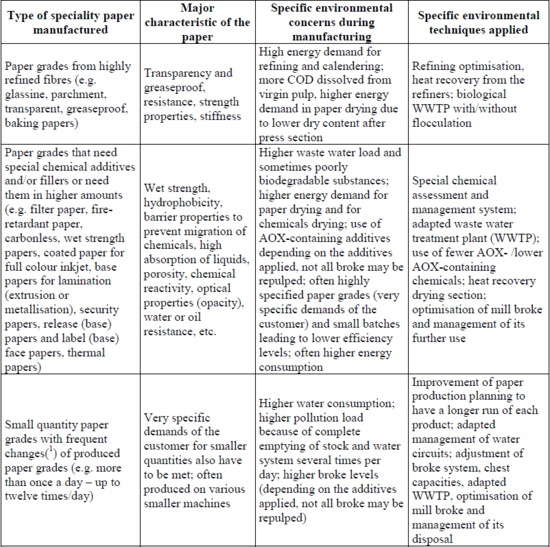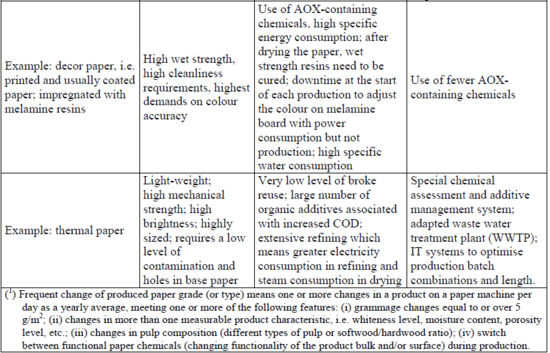Information about special paper
Back to Subsection DC paper
General description
Although there are a wide variety of paper products and different process layouts in paper mills almost all types of paper- and board-making processes have the following basic units:
- stock preparation;
- approach flow system;
- a paper and board machine consisting of:
- a headbox that introduces the suspension of fibres to the wire and creates a uniform dispersion of fibres across the total width of the wire belt,
- a wire section that drains paper web to around 12 – 20 % solids,
- a press section that removes more water out of the web by pressing down to about 50 % moisture content,
- a drying section that removes the rest of the moisture by heating the web with drying cylinders,
- a reeler that reels the paper web into a roll;
- on-line aggregates (e.g. calender, sizer, coater);
- depending on the paper and board grade, there are additional process units (optional) like calenders, sizer, coaters, a coating colour kitchen, winders, rewinders, sheeting plant and a roll wrapping station
Overview
Schematic overview of subsystems to consider when comparing energy balances of pulp and paper mills
Mass stream overview of a paper mill
Energy consumption and efficiency
In order to reduce fuel and energy consumption in pulp and paper mills, BAT is to use technique (a) and a combination of the techniques given below.
Technique (c): simultaneous generation of heat energy and electrical and/or mechanical energy in a single process, referred to as a combined heat and power plant (CHP). CHP plants in the pulp and paper industry normally apply steam turbines and/or gas turbines. The economic viability (achievable savings and payback time) will depend mainly on the cost of electricity and fuels.
Special paper
Paper and boards for technical and speciality uses cover a wide range of grades. Speciality papers have to fulfil very specific properties defined by their particular end use. Some of these properties are similar to those for commodity paper grades, but at a significantly higher level or within much closer tolerances (e.g. dry strength, porosity, thickness, optical properties). Other characteristic properties are very particular, such as cleanliness, high absorption and porosity, hydrophobicity, barrier properties, anti-soiling, resistance to certain chemicals, electrical conductivity, wet strength, abrasion resistance, defined pore size distribution, chemical reactivity, high opacity, transparency, appearance and texture.
Some examples for speciality papers are (with this list being far from complete):
- banknotes and security paper,
- decor and overlay paper,
- highly absorbent papers/boards,
- labels and release papers,
- wet laid nonwovens and filter papers/boards,
- thermal printing paper,
- photographic and digital imaging paper,
- technical drawing paper,
- creative paper for advertising and luxury packaging, mostly coloured (with a great choice of colours, finishes, textures and grammages),
- papers for cigarettes,
- carbonless copy paper,
- filter paper for laboratory use,
- flexible or luxury packaging papers,
- tracing and glassine papers,
- thin printing papers,
- papers with special barrier properties against water, water vapour, grease, etc.,
- electrical papers (cable paper, capacitor tissue, transformer board),
- building papers (wallpaper, barrier papers),
- artist's papers/board, luxury papers/boards, coloured papers/boards, etc.,
- bioactive papers/board,
- parchment paper and fuel, oil and other liquid filter paper,
- other.
Speciality papers are in general lower quantity products and therefore are typically produced on smaller paper machines starting at production rates of a few tonnes per day. Because of the low quantities and the very specific demands from the customer side, a further typical feature in speciality paper production is the high frequency of grade changes of at least one change paper grade per paper machine and day as a yearly average (often significantly more), leading to higher overall changeover losses (higher broke levels and material losses). Together with the small size of the paper machines, this leads to significantly higher specific consumption values of water, materials and energy. It is therefore necessary to take account of these special circumstances for speciality paper mills.
Strict requirements regarding cleanliness and/or incompatibilities between furnish components of different grades (also some of the chemical additives) may necessitate a more or less complete emptying of the stock and water system when changing paper types. Due to the high cleanliness requirements in the production of most speciality papers, in many cases water can only be recirculated to a limited extent. The specific waste water flow of speciality paper mills varies from 13 (30) m3/t up to 200 (150) m3/t depending on the product and the specific production conditions. The concentration of the organic load of the waste water for example is often low but together with the comparatively higher flow may result in relatively high specific emission loads per tonne of product.
The production of speciality papers often requires costly fibrous materials and/or specific fibre-processing equipment. For instance, some speciality paper grades contain, besides chemical pulp, other fibres such as synthetic fibres, cotton, abaca, flax, sisal, etc.
To achieve the demanded high strength values or specific characteristics, such as transparency or greaseproof properties, intensive refining of the fibrous raw materials is often required, which also increases the specific electric energy demand. During refining, the fibres are shortened and strongly fibrillated. During fibre fibrillation, a part of the organic material is released to water. Refining also leads to significantly slower dewatering on the wire section. In order to achieve a high level of retention of costly, special inorganic filler pigments and various chemical additives, gentle dewatering in the wire section is necessary with many speciality paper grades. The high degree of refining and/or the gentle dewatering often result in a comparatively low dry content of the paper web after the press section, which causes a higher energy demand in the drying section. Filter paper also requires more energy for drying as these papers cannot be pressed before the drying section or else they will lose porosity.
Depending on the speciality paper type, various chemical additives are introduced in the furnish and/or applied in surface treatments (e.g. sizing, coating, dyes, speciality chemical additives), which may partly end up in the waste water.
The possibilities for closing up the water circuits may also be limited by the production technique for this product group (e.g. increased heat because of intensive refining) or by qualitative demands placed on the individual paper types (e.g. electric conductivity, sensory characteristics, cleanliness).
The table below gives examples of some of the speciality paper types produced in Europe, some of their product characteristics, environmental aspects and examples of specific BAT to be considered for these paper grades.
Source: Best Available Techniques (BAT), Reference Document for the Production of Pulp, Paper and Board,2015
Back to Subsection DC paper
